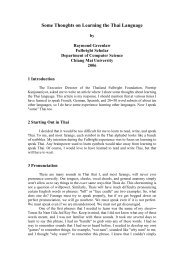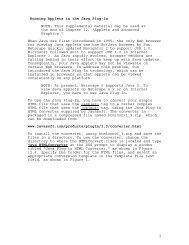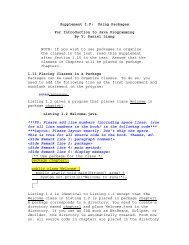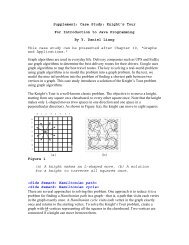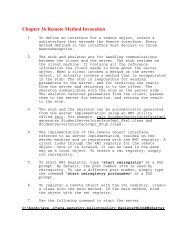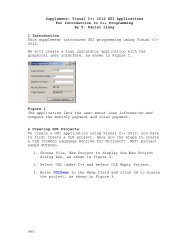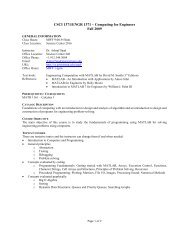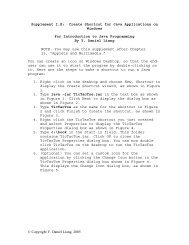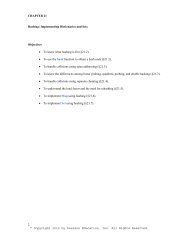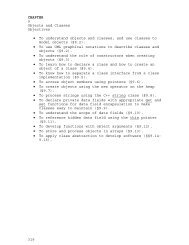CHAPTER 25 Weighted Graphs and Applications Objectives ⢠To ...
CHAPTER 25 Weighted Graphs and Applications Objectives ⢠To ...
CHAPTER 25 Weighted Graphs and Applications Objectives ⢠To ...
You also want an ePaper? Increase the reach of your titles
YUMPU automatically turns print PDFs into web optimized ePapers that Google loves.
Output: MST (a minimum spanning tree)<br />
1 MST minimumSpanningTree()<br />
2 {<br />
3 Let T be a set for the vertices in the spanning tree;<br />
4 Initially, add the starting vertex to T;<br />
5<br />
6 while (size of T < n)<br />
7 {<br />
8 Find u in T <strong>and</strong> v in V – T with the smallest weight<br />
9 on the edge (u, v), as shown in Figure <strong>25</strong>.24;<br />
10 Add v to T <strong>and</strong> set parent[v] = u;<br />
11 }<br />
12 }<br />
Vertices already in<br />
the spanning tree<br />
T<br />
V - T<br />
Vertices not currently in<br />
the spanning tree<br />
v<br />
u<br />
Figure <strong>25</strong>.24<br />
Find a vertex u in T that connects a vertex v in V – T with the<br />
smallest weight.<br />
The algorithm starts by adding the starting vertex into T. It then continuously adds a vertex (say v) from V<br />
– T into T. v is the vertex adjacent to a vertex in T with the smallest weight on the edge. For<br />
example, five edges connect vertices in T <strong>and</strong> V – T, as shown in Figure <strong>25</strong>.y, (u, v) is the<br />
one with the smallest weight. This algorithm can be implemented using priority queues to<br />
achieve the O(|E|log|V|) time complexity. Use Listing <strong>25</strong>.6 TestMinimumSpanningTree.cpp<br />
to test your new algorithm.<br />
***<strong>25</strong>.10 (Alternative version of Dijkstra algorithm) An alternative version of the Dijkstra algorithm<br />
can be described as follows:<br />
48



